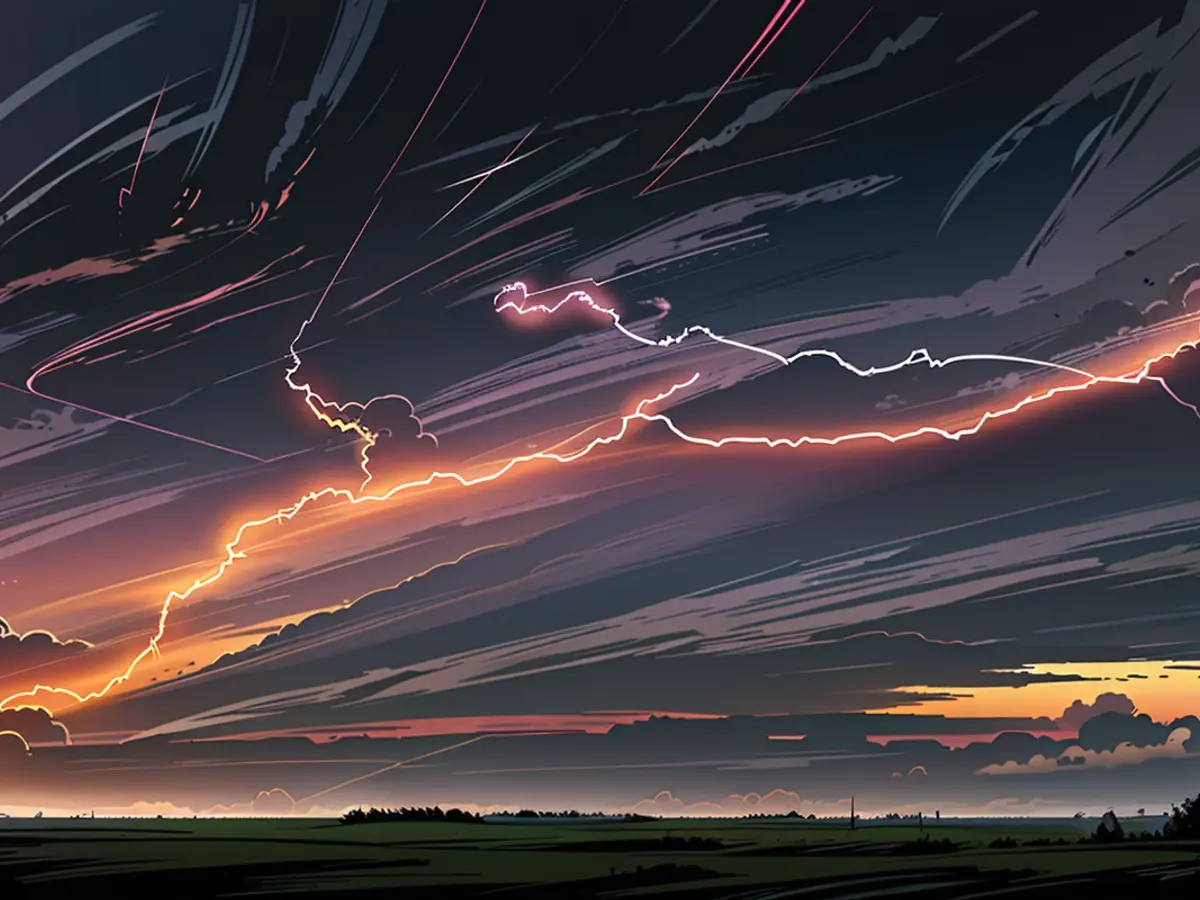The process behind the creation of lightning and its accompanying sound, thunder, involves intricate electrical phenomena.
Flashes of Light Across the Sky, Booms Echo, and a Unique Aroma Wafts by: Such Scenarios are Frequent in Summer. But What Actually Occurs During a Lightning Strike? How Big Can They Grow? And Where Origins the Thunder Sound?
The Makeup of a Lightning Strike
A lightning strike originates from an electrical field within a thundercloud. Inside the cloud, particles separate: tiny ice crystals develop a positive charge, while water droplets assume a negative charge. The upper part of the cloud, being colder, becomes positively charged, and the lower part takes a negative charge. Eventually, the energy discharges, leading to a lightning strike.
These occurrences can reach temperatures up to 30,000 degrees Celsius and extend for miles on end. The longest lightning strike ever documented, as reported by the World Meteorological Organization (WMO), spanned over 750 kilometers across the USA.
These discharges can manifest in various forms, with ground-to-cloud strikes being the most hazardous. Cloud discharges remain confined within the thundercloud and illuminate the sky, while air discharges extend into the atmosphere without touching the ground.
The Perils of a Lightning Strike
So-called "dry lightning" formations occur between clouds and the earth without rain in the vicinity. This form is particularly dangerous, often sparking wildfires, notably during prolonged dry spells. In some parts of Germany, such as in certain parts unaffected by rain or with hardly any precipitation, dry lightning can arise.
As for human safety, lightning poses a threat of amperage beyond 100,000, capable of causing burns, paralysis, or heart failure. The German Weather Service (DWD) advises that the safest refuge during a lightning storm is in solid buildings or in a car – thanks to its metallic body, which allows the lightning current to flow outside.
The Source of Thunder
The thunder that follows a discharge is the consequence of the air within the lightning channel's explosive heating. The extremely high temperatures cause the air to explode, leading to a rapid expansion and the formation of shockwaves that travel at speeds of approximately 330 meters per second. Our ears register this as thunder.
If the lightning channel runs perpendicular to the observer, all sound waves reach the ear simultaneously, resulting in a 'crack.' If the lightning channel slants towards the observer, pressure waves from different points of the lightning channel reach the ear at varying times, creating a prolonged 'rumble' of thunder.
To estimate the distance of a lightning strike, one can utilize the so-called "counting seconds" rule: The time elapsed between the visible discharge and the thunder can be translated into an approximate distance to the lightning: three seconds equate to one kilometer.
The Smell of Summer Rain
The aroma lingering during a summer rain is commonly referred to as petrichor by researchers. Two scholars, Australians by birth, who coined the term in 1964 from ancient Greek words "petros" (stone) and "ichor" (the mythological fluid of the gods), discovered that when rain comes into contact with the earth, it releases particles containing the fragrance of an oil produced by plants during drought. The wind carries these scent molecules, causing some to perceive the scent of rain before it even reaches their location.
This phenomenon can occur during colder months, but it mainly occurs during the summer months. For this, the ground must have already warmed up, according to the DWD. In theory, this can also occur during the winter months, but the required conditions are significantly less frequent.
The weather during a lightning strike can be extreme, with temperatures reaching up to 30,000 degrees Celsius. After a lightning strike, the thunder we hear is caused by the air within the lightning channel explosively heating and forming shockwaves.







